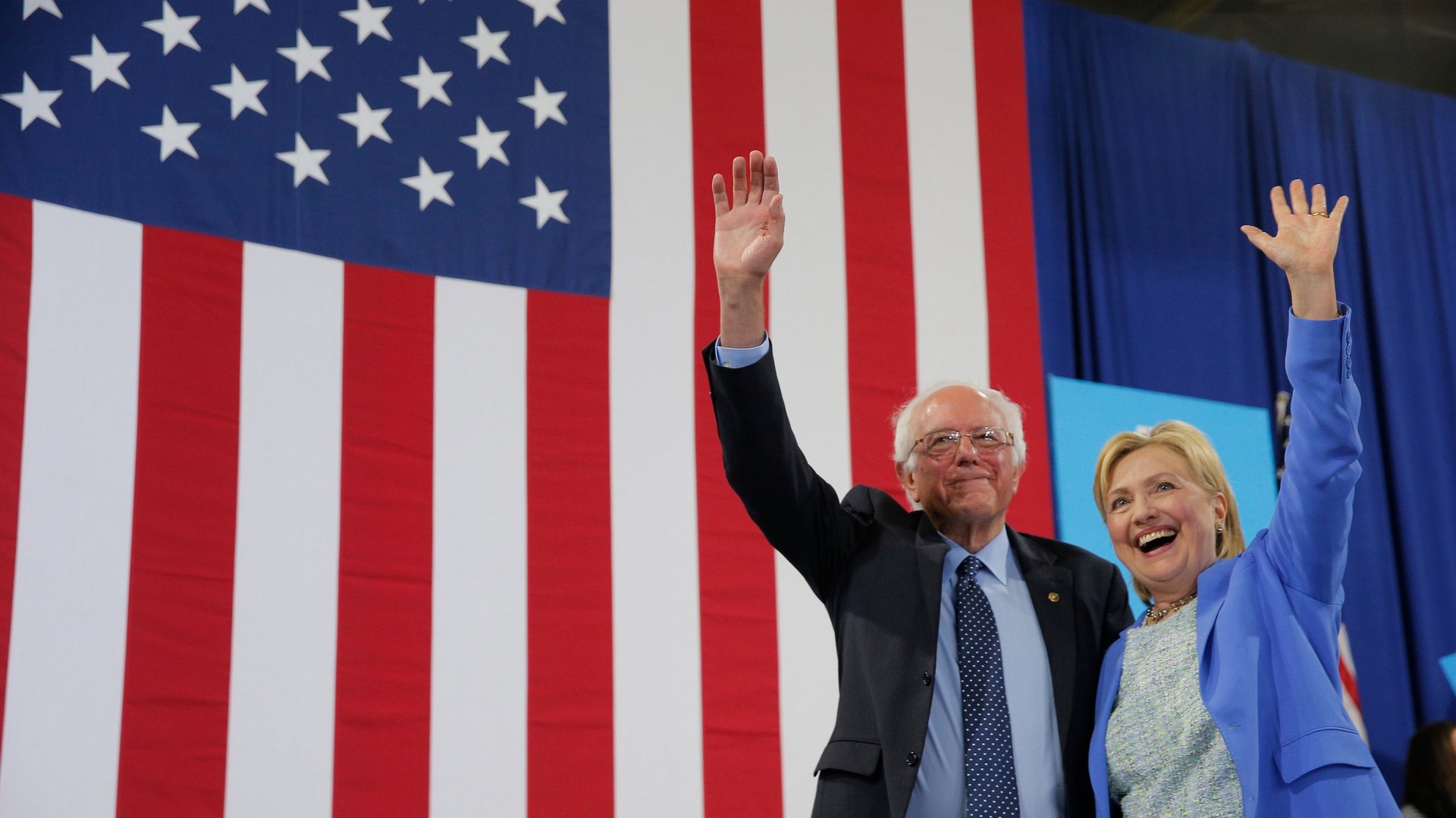Democratic delegates are more divided than Republicans, but the story isn’t that simple
For months, headlines have heralded the demise of the Republican party. The ascendance of Donald Trump, for a time, sent the GOP into a tailspin, with establishment party members vowing to withhold endorsements as the nominee headed into the general election. Even to this day, one-time favorite Jeb Bush is rumored to be supporting Libertarian candidate Gary Johnson. (Sources close to the former Florida governor have denied this.)


For months, headlines have heralded the demise of the Republican party. The ascendance of Donald Trump, for a time, sent the GOP into a tailspin, with establishment party members vowing to withhold endorsements as the nominee headed into the general election. Even to this day, one-time favorite Jeb Bush is rumored to be supporting Libertarian candidate Gary Johnson. (Sources close to the former Florida governor have denied this.)
But following the Republican National Convention last week, it appears the Trump campaign has caught a swell of nationwide support. Some polls have him leading presumptive Democratic nominee Hillary Clinton by as many as six points. This reality seems to fly in the face of the idea of an irreparably fractured GOP. And, indeed, when you look at the pre-convention delegate counts for both parties, Republicans are measurably more unified than their opponents.
Trump came out of the primaries with a total of 1,543 pledged delegates. Texas senator Ted Cruz followed behind with 559, Florida senator Marco Rubio with 165, and Ohio governor John Kasich with 161. All together, the opposition to Trump cobbled together only 885 delegates; giving Trump a differential lead of 658.
Meanwhile, Hillary Clinton held 2,205 delegates prior to the start of the Democratic National Convention in Philadelphia this week (not including superdelegates). Vermont senator Bernie Sanders held 1,846—a difference of only 359. Taking these numbers at face value, it’s clear Democratic voters are notably more divided than their Republican counterparts.
Now, a number of factors play into this disparity. For one, the Democratic primary played out almost exclusively between two relatively different candidates. Such an atmosphere is simply more conducive to contrasting division than what happened among the Republicans—a dozen or so establishment candidates with one, highly popular outlier.
Second, it’s important to note how differently the Republican and Democratic primaries proceed. A number of Republican state primaries are “winner-take-all,” meaning the candidate that receives the largest share of votes receives all of its pledged delegates. For Democrats, delegates are doled out on a proportional basis. As such, the picture you get of party unity coming out of the Republican primary may not be especially reflective of the electorate’s mood.
But it’s a powerful image nevertheless. And one that might ultimately inspire party unity, even if born out of misrepresentation.
Bernie Sanders, for his part, has endorsed Hillary Clinton—leading many to speculate that his vast network of supporters will follow suit and vote for the former Secretary of State come November. But if preliminary reports out of Philadelphia—where anti-Clinton, pro-Sanders protesters abound—are any indication, coupled with the recent leak of DNC emails, the situation on the ground still has potential for implosion.